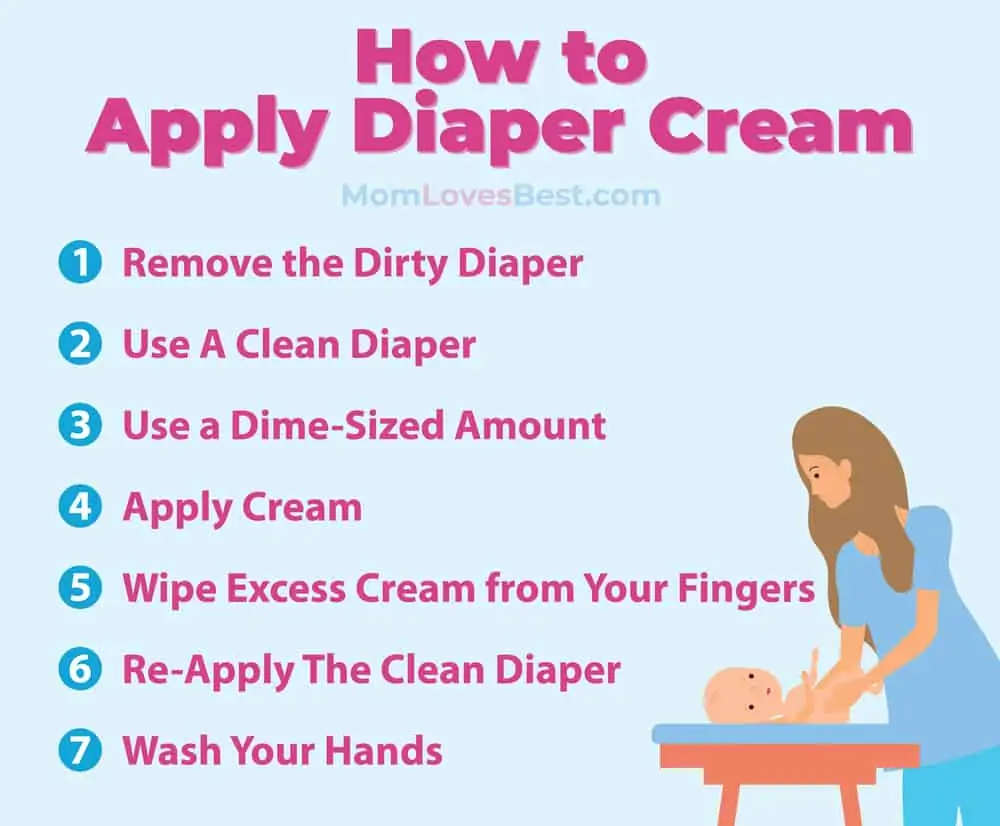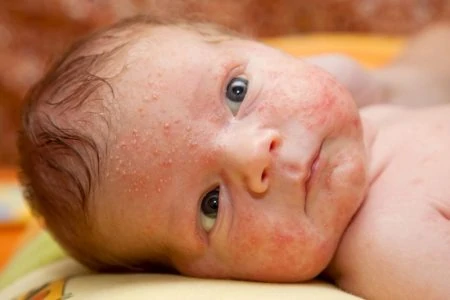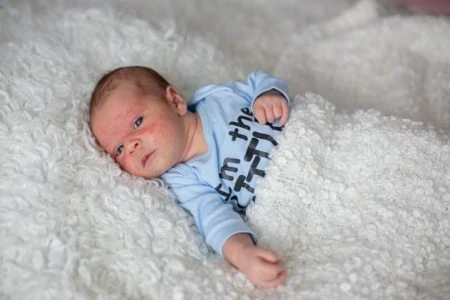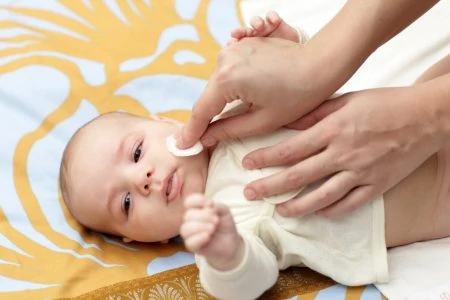Is your baby’s diaper rash causing tears when it’s time for a diaper change? Are they tossing and turning day and night to try to get comfortable in their diaper?
Dealing with diaper rash is something many parents face during the first stages of their child’s life. Still, no matter how common it is, we know from experience that it can be hard.
So let’s get into the dirty details on diaper rash. What is diaper rash? What causes it? How can you identify what kind of diaper rash your baby has? And, most importantly, what can you do to treat it?
Key Takeaways
- Diaper rash types: yeast, acidic bowel movements, contact rash, bacterial, and eczema.
- Treatments: antifungal creams for yeast, over-the-counter creams for most rashes, and doctor-prescribed treatments for severe cases.
- Prevention: frequent diaper changes, thorough cleaning, air drying, avoiding tight diapers, and using fragrance-free products.
- When to call the doctor: fever, rash spreading, worsening rash, persistent diarrhea, or presence of blisters or pus-filled sores.
The Different Types of Diaper Rash
The first step in treating a diaper rash is to figure out what type of rash your baby has and what’s causing it. Diaper rashes can occur as early as one week of age, but they most commonly happen in babies 9-12 months old.
1. Yeast
The inside of a baby’s diaper is a warm and moist environment, the perfect place for yeast bacteria to grow and thrive. The strain of yeast that causes a diaper rash is called candida, and it usually grows in the folds of your baby’s skin (1). It can be common in babies being treated with antibiotics.
A yeast rash is bright red and scaly with raised borders. It typically lasts longer than two days and, as it gets worse, can develop blisters and satellite lesions in the main area of the rash (2). A yeast rash usually does not go beyond the diaper area.
Yeast rashes do not respond to typical diaper rash treatment. If you call your baby’s pediatrician, they might prescribe an antifungal cream such as Nystatin or recommend an over-the-counter cream if the rash is mild enough.
2. Acidic Bowel Movements
The acids in certain foods, especially fruits and fruit juices, can make your baby’s stools acidic, causing a rash to occur. This type of rash looks like a bright red sunburn initially but can develop open sores if not treated right away.
The good news is that over-the-counter creams work great for clearing up an acid rash. You just want to make sure to apply a thick layer with every diaper change, providing a barrier between your baby’s behind and any bowel movements they may have.
If the rash keeps occurring, remove acidic foods from their diet for a while.
Although it is rare, acid rashes can occur if you are breastfeeding and eating a lot of fruit because the baby gets the acid from your breast milk (3).
3. Contact Rash
A contact rash is a flat and blotchy rash that usually occurs on large areas of your baby’s bottom. It’s generally caused by skin being in a wet diaper too long. However, harsh chemicals found in disposable diapers and certain detergents used to clean cloth diapers can also cause a contact rash.
Contact rashes are easy to treat by using over-the-counter diaper creams. They can be treated and prevented by simply making sure you change your baby soon after they wet their diaper.
4. Bacterial
A bacterial rash is less common than a yeast rash. These rashes look similar to impetigo and cause sores and, in some cases, pus-like yellow scabs on your baby’s bottom (4).
If you suspect your baby has a bacterial diaper rash, it’s best to contact your doctor because topical or oral antibiotics are often needed to clear up the issue (5).
5. Eczema
Eczema often begins as small raised blisters. As they break, they cause the skin to ooze (6). Eventually, the rash will become hard, raised, scaly, and almost always itchy. Eczema can be caused by an overactive immune system, heat, dairy, food allergies, and contact allergens such as scented laundry detergent.
Here are things you can do to help soothe the symptoms:
- Choose water-based baby wipes.
- Oatmeal baths.
- Moisturize with coconut oil.
- Try eczema-focused moisturizers.
- Decrease allergen contact by using scent-free body wash and laundry detergent.
- Use over-the-counter steroid cream as a last resort.
- If all of the above fails, talk to your doctor.
What Diaper Cream Should I Get?
Have you ever walked into the baby aisle to get diaper cream? Did you find yourself overwhelmed by the sheer volume of options? We hear you — it can be hard to decide what kind to get for your baby’s rash.
These are our suggestions for diaper creams you should use to treat your baby’s diaper rash, depending on its severity:
- For mild rashes: Try brands like Honest, Cetaphil, or CocoMe. These will soothe your baby’s skin and are free from petrolatum if you’re uncomfortable with using gasoline-based products.
- For moderate rashes: Choose a product with zinc oxide such as Baby Butz, Desitin, or Balmex. These are stickier and therefore messier, but the stickiness holds to your baby’s bottom better. This provides a more substantial barrier between your baby and their diaper.
- For severe rashes: For really bad rashes, you can try Boudreaux’s Butt Paste (maximum strength) or Burt’s Bees Diaper Ointment, which contains zinc oxide, sweet almond oil, lanolin, and even beeswax — a super combo for baby’s skin.
Medical Note
How Do I Prevent Diaper Rash?
So, you’ve cleared up your baby’s rash and want to prevent it from happening again. As parents, our baby’s discomfort is our discomfort too.
Here are some things you can do to help keep a diaper rash away:
- Change your baby often: Check your baby every 1 to 2 hours to see if they are wet, and make sure to change them as soon as you notice their diaper is wet or soiled.
- Clean the area thoroughly: When bathing your little one, don’t forget all the nooks and crannies in those cute baby rolls. Use scent-free and alcohol-free wipes or a wet cloth to clean your baby between diaper changes.
- Make sure they’re dry: Pat — never rub — your baby dry before putting on a clean diaper. Rubbing can cause their sensitive skin to get irritated.
- Let their skin breathe: Allow your baby time without a diaper to air dry. This also gives their skin a break from the diaper’s constant rubbing.
- Don’t overtighten the diaper: Diapers that are too tight keep moisture trapped inside, creating a favorable environment for fungal and bacterial growth. The tight diaper also increases the rubbing and irritation of the baby’s skin.
- Consider eliminating foods: If your baby continually gets a diaper rash after eating a certain food, you might consider holding off on that food for a while. The acid might be too much for your little one to handle, or it could be a sign of an allergy.
- Go fragrance-free: Fragrances can irritate your baby’s delicate skin. Consider using fragrance-free wipes or even wiping your baby’s skin with plain water.
- Wash your hands: Wash your hands before and after diaper changes to prevent the spread of bacteria and yeast.
A Note About Cloth Diapers
As a cloth diapering family, we’re all about saving money and the planet with what we put on our baby’s bottom. However, you need to be aware of a couple of points regarding cloth diapers and diaper rashes.
1. Ammonia Rash
An ammonia rash isn’t really a rash at all but a burn caused by prolonged contact with urine in your baby’s diaper. This occurs more often in older babies who are sleeping through the night and appears as blotchy flat spots or blisters.
While ammonia burns can occur in babies who use disposables, they are more common in cloth-diapered babies. That’s because cloth diapers do not leave a baby feeling dry like disposable diapers do. Instead, the moisture will have direct contact with your baby’s skin as long as the diaper is on them.
2. Using Rash Cream With Cloth Diapers
The treatment game changes when caring for a diaper rash and using cloth diapers.
Many diaper creams contain petroleum, which can cause repelling on synthetic fibers like those found in many modern cloth diapers. This means your diapers will no longer soak in any liquid, causing leaks and often rendering your diapers unusable because of how hard the cream is to get out.
The good news is that there are petroleum-free diaper creams out there — just make sure to read the label carefully.
If you find yourself in a position where you must use a petroleum-based cream, you can still use your diapers! Just make sure to use a liner between your diaper and your baby’s bottom. This can be a flannel cloth, a piece of cotton, or even an old t-shirt.
If your diapers are made from natural materials such as cotton or bamboo, it doesn’t matter what kind of diaper cream you use; just make sure to wash cloth diapers thoroughly with hot water and a good detergent.
When Should I Call the Doctor?
In many cases, diaper rashes can clear up on their own without the need for a doctor’s intervention. However, there are some cases when a doctor’s care is necessary.
If your baby is experiencing any of these symptoms with their diaper rash, give your pediatrician a call:
- If your baby has a fever.
- If the rash spreads outside of the diaper area.
- If the rash gets worse, even with the use of over-the-counter creams.
- If the rash is accompanied by diarrhea that lasts longer than 48 hours (7).
- If the rash has blisters or pus-filled sores — this is a sign of a bacterial infection.
FAQs
Taking Rash Action
Chances are most babies will experience diaper rash at least once. It is important to identify the type of rash your baby has and go through the appropriate steps to stop it in its tracks.
Luckily, there are plenty of products and methods out there to help you do just that!













